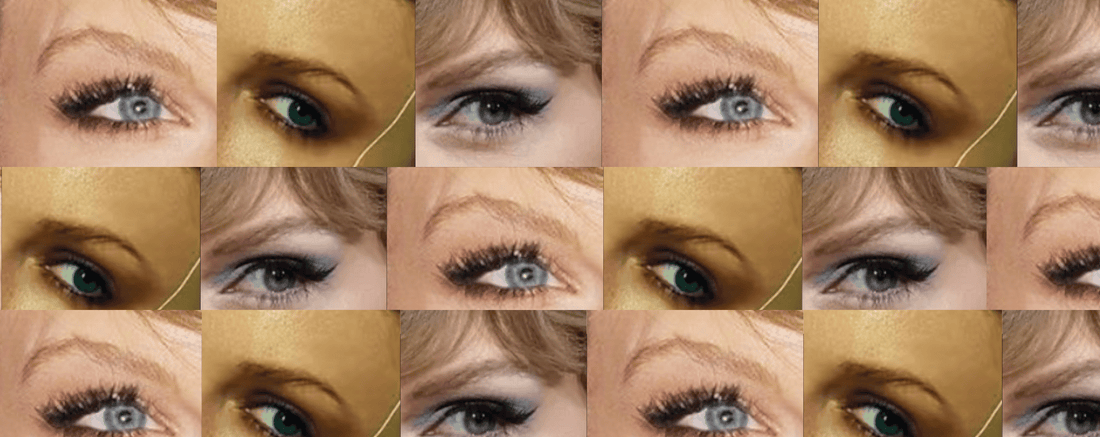How to Identify Different Skin Types
Identifying your skin type is the first step in choosing the right makeup. Here are the main skin types and their characteristics:
- Oily Skin: Enlarged pores, shiny complexion, prone to acne and blackheads.
- Dry Skin: Flaky patches, rough texture, feeling of tightness, and dull appearance.
- Combination Skin: Oily in the T-zone (forehead, nose, chin) and dry or normal on the cheeks.
- Sensitive Skin: Easily irritated, prone to redness, itching, and may react to certain products.
To accurately determine your skin type, cleanse your face and observe its behavior without any products for a few hours. This will give you a clear indication of your natural skin type.
Makeup Procedures and Tips for Oily Skin
If you have oily skin, the goal is to control shine and prevent makeup from sliding off. Here are some tips:
- Primer: Use a mattifying primer to control oil and create a smooth base.
- Foundation: Opt for oil-free, long-wearing, and mattifying foundations.
- Powder: Set your foundation with a translucent setting powder to keep oil at bay.
- Blotting Papers: Carry blotting papers to absorb excess oil throughout the day.
- Setting Spray: Use a setting spray designed for oily skin to lock in your makeup.

Makeup Procedures and Tips for Dry Skin
For dry skin, hydration is key. Here's how to keep your makeup looking fresh and radiant:
- Moisturizer: Start with a rich, hydrating moisturizer to create a smooth canvas.
- Hydrating Primer: Use a primer that adds moisture and radiance.
- Foundation: Choose a dewy or luminous foundation that hydrates and gives a natural glow.
- Cream Products: Opt for cream blushes and highlighters, which blend seamlessly into dry skin.
- Avoid Powder: Use minimal powder, as it can make dry skin look cakey.
Makeup Procedures and Tips for Combination Skin
Combination skin requires balancing different areas of the face. Here are some tips:
- Primer: Use a balancing primer to address both oily and dry areas.
- Foundation: Choose a foundation that offers a natural finish, not too matte or dewy.
- Multi-Zone Approach: Apply mattifying products to the T-zone and hydrating products to the cheeks.
- Blush and Highlight: Use products that work well with both skin types, like a gel-based blush.
- Setting Spray: A light setting spray can help to set makeup without adding excess oil or dryness.
Makeup Procedures and Tips for Sensitive Skin
For sensitive skin, gentle and hypoallergenic products are essential. Here’s what to do:
- Patch Test: Always patch test new products to check for reactions.
- Fragrance-Free Products: Opt for fragrance-free and hypoallergenic makeup.
- Mineral Makeup: Mineral makeup is often better tolerated by sensitive skin.
- Gentle Application: Use soft brushes and sponges to avoid irritation.
- Soothing Ingredients: Look for products with soothing ingredients like aloe vera and chamomile.

How to Select the Best Foundation for Your Skin Type
Choosing the right foundation is crucial for a flawless finish. Here’s how to select the best one for your skin type:
- Oily Skin: Go for oil-free, mattifying, and long-wear foundations.
- Dry Skin: Choose hydrating, dewy, and luminous foundations.
- Combination Skin: Opt for a natural finish foundation and use different primers for different areas.
- Sensitive Skin: Select fragrance-free, hypoallergenic, and mineral-based foundations.
Always test the foundation on your jawline to ensure the perfect match.
Common Makeup Mistakes to Avoid for Each Skin Type
Avoid these common mistakes to achieve a flawless makeup look:
- Oily Skin: Using too much powder, skipping primer, and not setting makeup properly.
- Dry Skin: Using matte foundations, neglecting moisturizer, and over-powdering.
- Combination Skin: Not addressing different zones separately, using the wrong foundation finish.
- Sensitive Skin: Skipping patch tests, using fragranced products, and applying makeup too harshly.
FAQs: Choosing the Right Makeup for Your Skin
Q1: Can I use the same products all year round? A1: Skin can change with seasons, so adjust your products accordingly.
Q2: How often should I replace my makeup products? A2: Every 6-12 months, or sooner if they cause irritation or change in texture.
Q3: What ingredients should I avoid for sensitive skin? A3: Fragrances, alcohol, and harsh chemicals.
Q4: How can I make my makeup last longer on oily skin? A4: Use a primer, setting powder, and setting spray, and blot throughout the day.
Q5: Can dry skin use powder products? A5: Use sparingly and choose hydrating formulas.
Choosing the right makeup for your skin type can transform your beauty routine, ensuring that your makeup enhances your natural features while addressing specific skin concerns. By following these tips and avoiding common mistakes, you’ll achieve a flawless and radiant look tailored to your unique skin needs.



